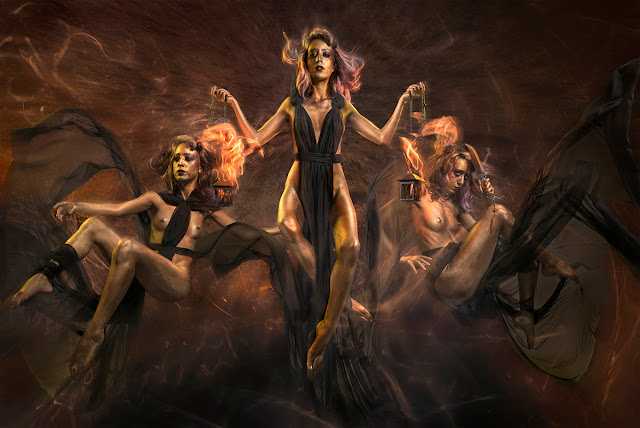Hecate was a goddess in Greek mythology, considered to be the goddess of magic and witchcraft. She was often depicted holding two torches or a key. She was the daughter of the Titans Perses and Asteria, and she was honoured in the households as a protective goddess who brought prosperity.
Hecate was a chthonic goddess that preceded the Olympians, and it seems that she was highly worshipped in Thrace. She was also closely associated to the spiritual world, ghosts, and the dead. A shrine to Hecate was placed at the entrances of homes or even cities, hoping to protect them from the evil spirits that roamed the world. She also helped goddess Demeter in her search for her daughter Persephone, when the latter was abducted by Hades, god of the underworld; after it was decided that Persephone would spend a third of a year in the underworld and the rest on earth, Hecate became Persephone's companion to and from the underworld each year.
SISYPHUS, son of Aeolus, married Atlas ’s daughter Merope, the Pleiad, who bore him Glaucus , Ornytion , and Sinon, and owned a fine herd of cattle on the Isthmus of Corinth. b. Near him lived Autolycus , son of Chione , whose twin-brother Philammon was begotten by Apollo , though Autolycus himself claimed Hermes as his father. c. Now, Autolycus was a past master in theft, Hermes having given him the power of metamorphosing whatever beasts he stole, from horned to unhorned, or from black to white, and contrariwise. Thus although Sisyphus noticed that his own herds grew steadily smaller while those of Autolycus increased, he was unable at first to accuse him of theft; and therefore, one day, engraved the inside of all his cattle’s hooves with the monogram SS or, some say, with the words ‘Stolen by Autolycus’. That night Autolycus helped himself as usually and at dawn hoof-prints along the road provided Sisyphus with sufficient evidence to summon neighbours in witness of the th...

Comments
Post a Comment